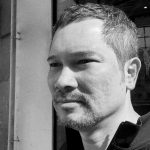The seventh edition of the President’s Young Talents exhibition (PYT) opened 4 October 2018 at the Singapore Art Museum (SAM). Since its first presentation in 2001, the platform has presented 38 artists, including this year’s Chen Yanyun, Chong Weixin, Debbie Ding, Hilmi Johandi and Zarina Muhammad.
David Chan, Grace Tan, Zaki Razak, Roger Nelson, Jason Wee, along with lead curator Andrea Fam from SAM, formed the Curatorial Committee and acted as curator-mentors for PYT2018. The selection process started in January 2018: first with a long-list of artists, which was then shortlisted to 10. The final five were selected in March 2018 after portfolio reviews. There are two prizes for PYT2018: the Grand Prize (selected by a jury panel) and the People’s Choice Award (determined by public votes on-site).
Lee Weng Choy interviews Dr June Yap, SAM’s Director of Curatorial, Programmes and Publications, about how PYT fits into the larger scheme of things at the Museum.
Lee Weng Choy: How involved were you in PYT2018?
June Yap: As noted, Andrea Fam is the lead curator, working closely with the curator-mentors and artists. I am involved as curatorial advisor, as are the senior curators of SAM.
LWC: What do you think has changed since the early editions?
JY: PYT was initiated as a platform to showcase the work of young artists with critical and aesthetically interesting practices. As an exhibition recognising distinctive aptitude amongst our younger artists and providing an opportunity for the presentation of their contemporary practices, PYT remains true to its original intent. What the mentoring process — begun in 2009 — introduces is the further engagement of the community via its curators and experienced artists, who help guide and shape the platform and its offerings.
LWC: Among its core priorities, it’s no surprise that a country’s principal contemporary art museum would want to focus on the country’s new artists and to make some form of assessment of who are the, so to speak, “best and brightest” artists of the next generation. But of course, contemporary culture is not just about young or emerging voices, important as those are. If you had to pick two other SAM programmes or platforms to juxtapose with PYT, what would they be and why? How does this triangulation reveal some of the core concerns of the Museum and its vision of how to present contemporary art to its local, regional and international audiences and stakeholders?
JY: SAM’s focus is on contemporary practices in the visual arts, in presentation and mediation, and in charting progression and change from a historical and aesthetic perspective. PYT serves, at an institutional level, to surface the up-and-coming local artists; not only to show their exceptional practices, but to examine these practices in relation to current conditions, and to practices that have come before them. What are the concerns and interests of these young artists? What challenges do they face that may differ from the challenges of artists that came before them?
Besides PYT, another key platform for critical contemporary practices is the Singapore Biennale (the next edition opens in 2019), which is envisioned by SAM as an opportunity for engagement and dialogue on contemporary art, its contexts and discourses. Whereas PYT’s scope is the local, with the Biennale, one can observe contemporary aesthetics across a wider geographical, cultural and aesthetic range.
With PYT’s emphasis on young artists, SAM’s solo exhibitions may then be seen as appreciating artists at a further point in their careers, through registering and articulating key transformations of their practices in aesthetic form, subject and approaches. It is also such developments that we try to capture in our SAM collection. As such, it is not merely the new and promising that we have interest in, but how we might speak of and situate contemporary art as a category of aesthetic expression.
LWC: You’ve taken on many different roles, having worked in a wide range of circumstances, from the Guggenheim in New York, to being an independent curator, and a Phd student. During all this time, have you taken on a number of informal or formal mentoring roles?
JY: Other than actual teaching positions, I do not think I formally mentor anyone. I do have conversations with a number of young artists and practitioners which (I hope) contain some information and experience of value to them. That said, I am all for identifying methods and traits of others I admire, and trying to learn from and be inspired by them.
LWC: The story of western modern art, which has been debated and corrected more recently, was once told in terms of intergenerational dynamics, as a series of oedipal scenes, sons killing their fathers, as the next ism superseded the last. That’s not the model for today’s art historians of Southeast Asia art. I appreciate why SAM would want to single out “young talents” (although I find those word choices rather infelicitous). But is there a problem in presenting an exhibition programme of a cohort of the young? — as if they somehow represented the voices of their millennial generation.
JY: It is not the purpose of PYT to “represent” a generation, even though it does present artists amongst their peers. As you’ve rightly observed, the chronological nature of art history is such that — depending on perspective — one looks backwards or else attempts to exceed what has come before. That said, I think we could say the same for most forms of craft and invention, where the impulse is to observe and then make something of one’s own. As history (and a philosophy of history) shows, one can certainly read lineage and supersession into a chronicle. It does not need to be the case. Though, such an exception would also be a history with a purpose, just not of the originary kind.





The President’s Young Talents 2018 exhibition runs at Singapore Art Museum 8Q 4 October 2018 – 27 January 2019. Admission is free for Singaporeans & PRs while ticketing charges for non-Singaporeans apply.


